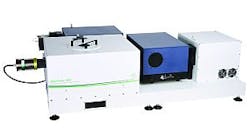PicoQuant fluorescence lifetime spectrometer
The FluoTime 300 fluorescence lifetime spectrometer from PicoQuant (Berlin, Germany) is based on time-correlated single photon counting (TCSPC) and resolves decay times down to a few picoseconds. Multiple detector options enable a large range of system configurations and different spectral sensitivities from the ultraviolet to the near-infrared. Its EasyTau software includes application-targeted wizards that guide users through all necessary steps for performing time-resolved and steady-state measurements.
-----
PRESS RELEASE
PicoQuant to present new fully automated spectrometer at Photonics West in San Francisco
The fluorescence lifetime spectrometer with steady-state option makes picosecond timing easy
The fluorescence lifetime spectrometer FluoTime 300 is based on the method of Time-Correlated Single Photon Counting (TCSPC) and allows to resolve decay times down to a few picoseconds. Multiple detector options enable a large range of system configurations and different spectral sensitivities from the ultraviolett to the near-infrared. A unique characteristic of this system is the very intuitive software „EasyTau“. It includes special application targeted wizards that guide also inexperienced users through all necessary steps for performing time-resolved as well as steady-state measurements.
-----
Posted by Lee Mather
Subscribe now to BioOptics World magazine; it's free!
